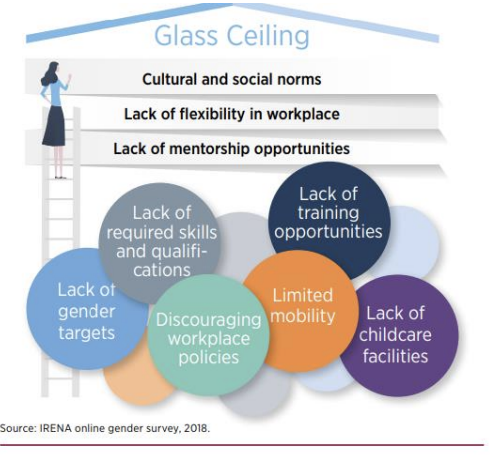Many industries around the world have been updating their technology, changing their administrative processes and automatizing protocols that have allowed a smoother journey towards the future, and the companies that conform to the renewable-energy industry are not the exception. This industry has managed to achieve important goals, and has taken a stand against climate emergencies happening in every country.
Despite all of these positive contributions, this industry also presents one of the largest gender-related barriers, with women facing greater obstacles when it comes to their participation in the renewables sector.

Women in STEM
The lack of women in the renewables industry is a direct consequence from the STEM Gap, which still limits vital factors such as access and progress opportunities. According to AAUW, women make up only 28% of the workforce in science, technology, engineering and math worldwide as of 2020, which of course makes these fields exclusionary and male-dominated, perpetuating “traditional” and outdated protocols inside companies. These behaviors tend to steer the female sector into other jobs, such as administrative positions or non-technical professions, even if they possess the knowledge and skills.
“Renewable” gender roles
 According to IRENA, only 32% of women are currently contributing to the renewable energy workforce, along with a small percentage of 22% of women in the oil and gas industry, which creates a very limited mobility for them within the companies. Along with this, this study also shows that it is only 40% of men inside the industry that actually perceive this gender-related issue, as opposed to 70% of women. This information can provide a clear idea about the reason behind the lack of progress and equality, since the hiring practices directly affect and reduce opportunities for women in regards to the generation of resources in the renewables sector.
According to IRENA, only 32% of women are currently contributing to the renewable energy workforce, along with a small percentage of 22% of women in the oil and gas industry, which creates a very limited mobility for them within the companies. Along with this, this study also shows that it is only 40% of men inside the industry that actually perceive this gender-related issue, as opposed to 70% of women. This information can provide a clear idea about the reason behind the lack of progress and equality, since the hiring practices directly affect and reduce opportunities for women in regards to the generation of resources in the renewables sector.
Some compelling solutions that could work in favor of advocating for empowerment of women include integrating a broader gender perspective concerning access to the skill programs and development trainings, consider a gradual but noticeable shift in social norms inside the companies, offer gender-sensitive policies and most of all raise awareness about achieving a greater participation of capable female professionals inside the renewable-energy industry. Both private sectors and government organizations in renewables can provide the necessary support to acknowledge women that are seeking to make a true change and improve gender diversity.



